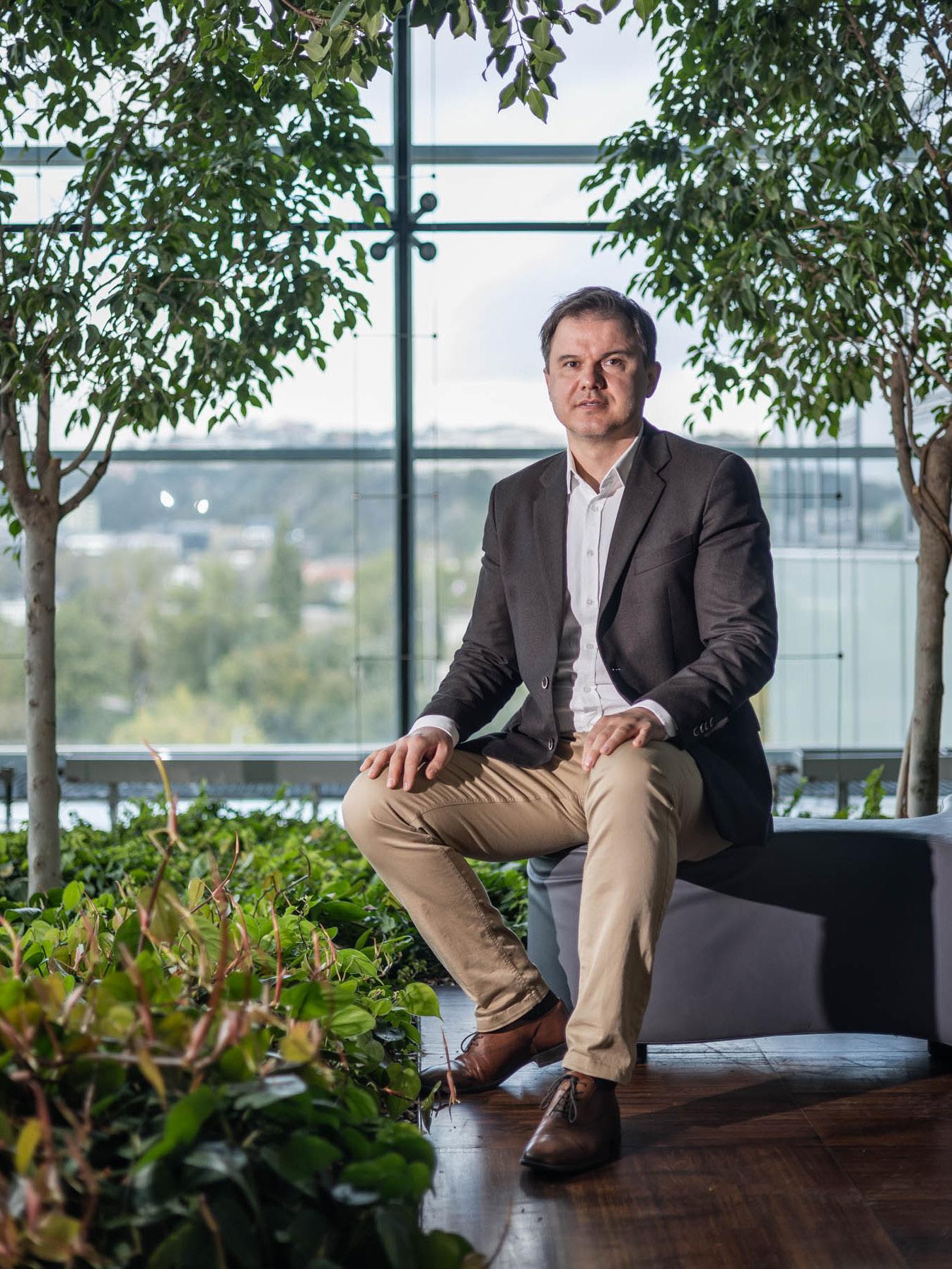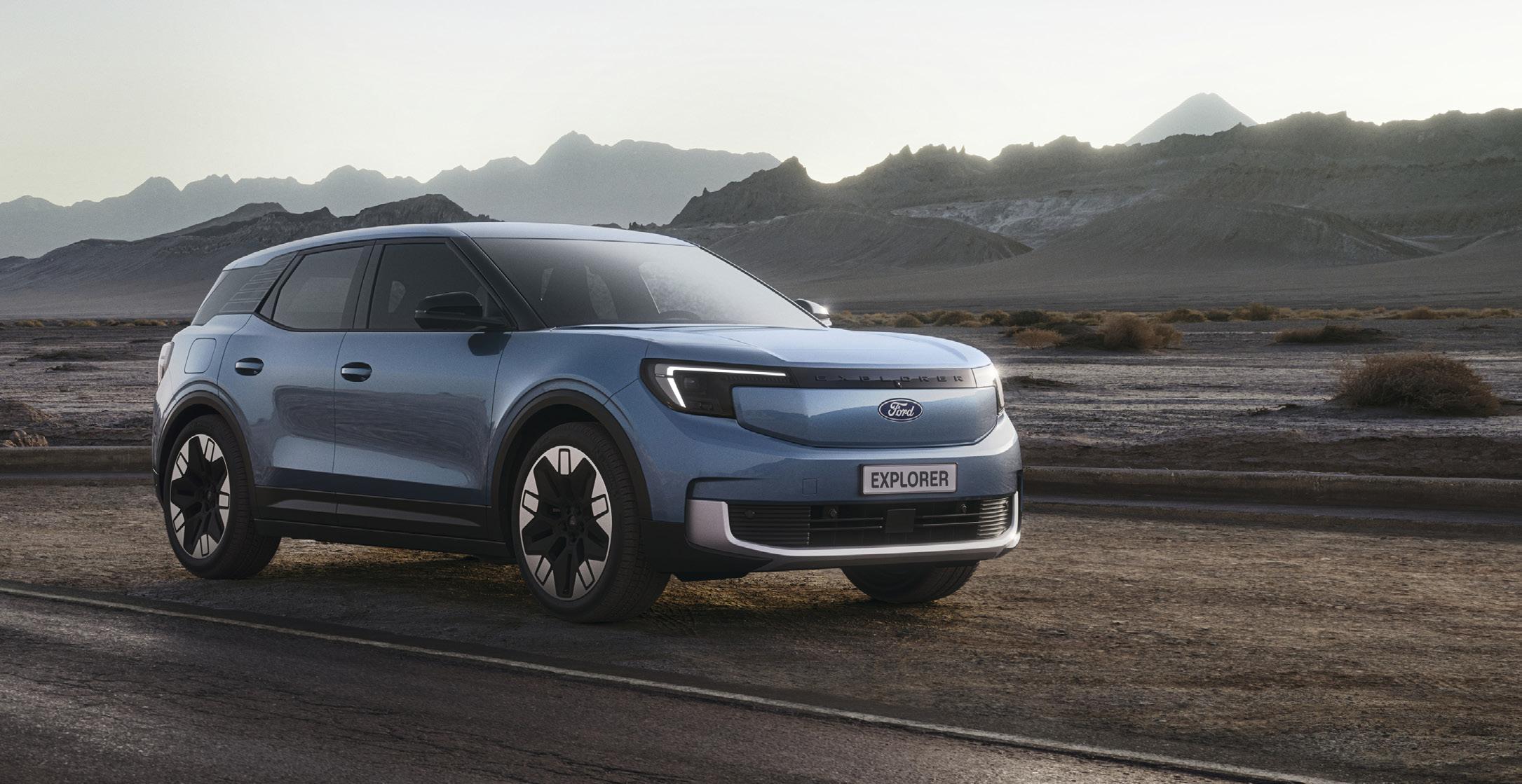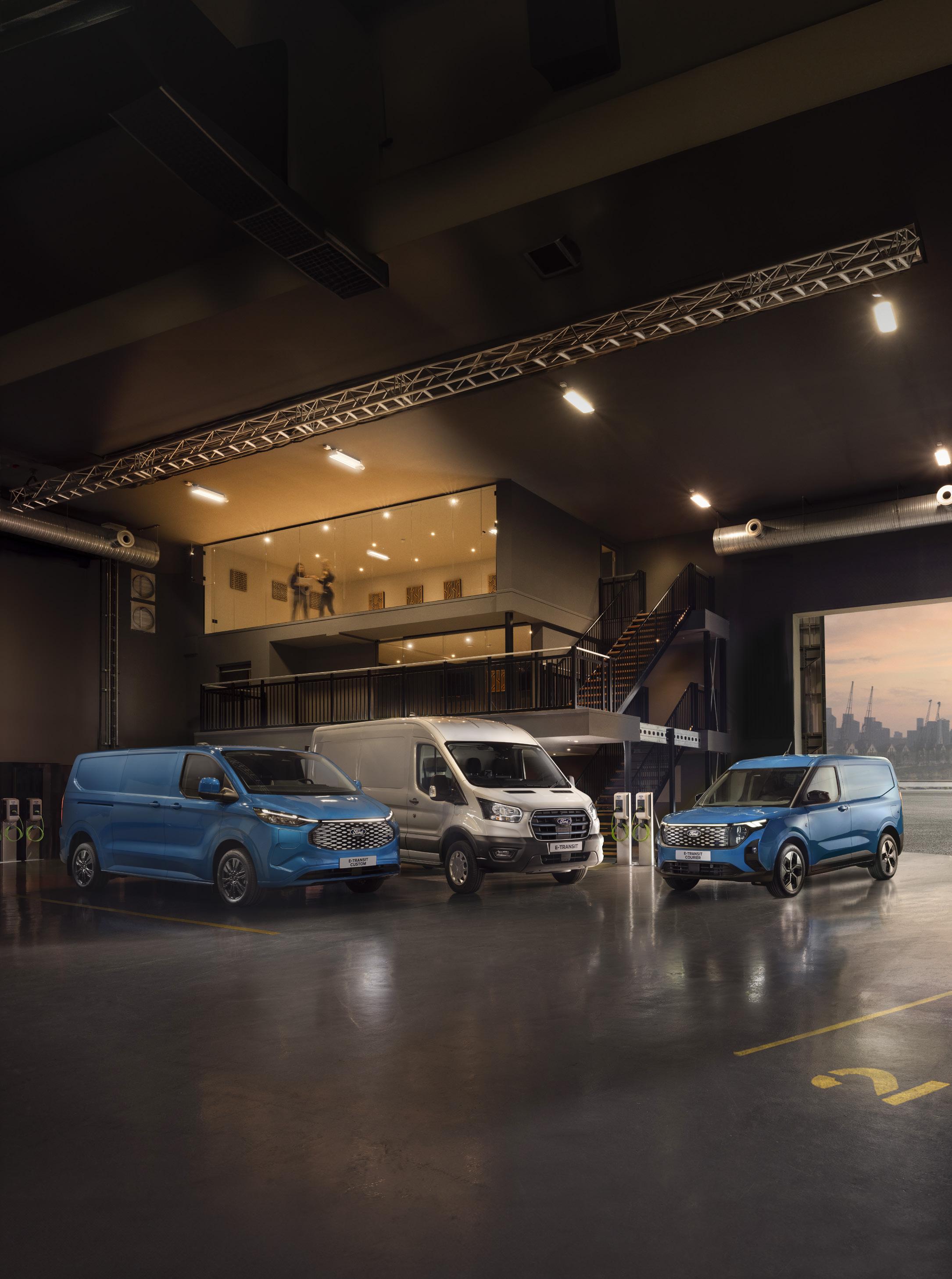ACCELERATING TOWARDS AN EV REVOLUTION






As a burgeoning market, Slovakia’s electric vehicles are supported by the country’s robust automotive manufacturing industry. With a promising green future on the horizon, the government is gearing up for an e-mobility revolution
Writer: Rachel Carr | Project Manager: Mantė Kalinauskaitė
SLOVAKIA’S EV INDUSTRY – FACTS AND FIGURES
• The EV market in Slovakia is expected to generate revenues of over USD$590 million by the end of 2025, whilst BEVs are anticipated to generate more than USD$189 million in that time.
• There are currently 2,424 EV charging stations in 967 locations throughout Slovakia.
• Tesla is the country’s leading EV brand, followed by Volkswagen.
• The number of EVs on Slovak roads currently exceeds 15,000.

The electric vehicle (EV) industry in Slovakia has gained momentum in recent years, driven by a combination of government initiatives, increased consumer interest in sustainable transportation, and the presence of major automotive manufacturers in the region.
Slovakia is home to several leading automotive manufacturers, including Volkswagen, Kia, and Stellantis, that are increasingly shifting their focus from traditional combustion engines towards EVs, supported by investments in production facilities.
Furthermore, Jaguar Land Rover, rebranded as JLR, has a state-of-the-art plant in Nitra that has been reconfigured for EV production as part of the company’s Reimagine strategy, which aims to launch nine new models by 2030. In addition, Volvo is constructing a new plant in Košice that will exclusively produce EVs.
Within the dynamic EV market, two notable categories have emerged – battery electric vehicles (BEVs), which run solely on electric power, and plug-in hybrid electric vehicles (PHEVs), which combine electric propulsion with traditional engines.
Both types are pivotal in driving Slovakia towards a greener future and highlighting the nation’s commitment to innovation and sustainability in transportation.
The development of charging infrastructure is crucial for the growth of the EV market. In recent years, Slovakia has made strides in expanding its charging station infrastructure, including fast chargers along major highways and urban centres, which is essential to support the increasing number of EVs on the road.
Slovak consumers are gradually becoming more open to EVs, driven by rising awareness of environmental issues and the long-term cost savings associated with ownership. However, challenges such as the initial purchase price and range anxiety still exist, with efforts ongoing to address these concerns.
The future of the EV industry in Slovakia looks promising as the EU’s regulatory environment is pushing for tougher emissions standards, likely accelerating the country’s production and adoption of environmentally friendly transportation.
Moreover, as technology advances and battery costs decrease, they are expected to become more affordable and accessible to a broader audience.
Slovakia is, therefore, positioning itself as a key player in the European EV market, leveraging its strong automotive industry and supportive policies to foster a sustainable transportation future.

The Slovak Electric Vehicle Association plays a critical role in advocating for e-mobility and collaborating with various entities to drive the EV transition forwards. Director, Patrik Krizansky, discusses Slovakia’s adaption to green and sustainable travel

The Slovak Electric Vehicle Association (SEVA) promotes the development and adoption of EVs in Slovakia.
Its mission includes advocating for policies that support sustainable transportation, educating the public about the benefits of electric mobility, and fostering collaboration amongst stakeholders in the sector such as manufacturers, governmental bodies, and non-governmental organisations (NGOs).
SEVA often engages in initiatives to increase awareness of EVs, address infrastructure needs such as charging stations, and reduce emissions in the transportation sector. The association also participates in events, conferences, and workshops to discuss EV technology advancements and challenges facing the industry.
Through its efforts, SEVA aims to contribute to a sustainable future by promoting cleaner transportation options and addressing environmental concerns related to conventional vehicles.
EME Outlook (EO): Firstly, can you tell us the origins of SEVA and its initial mission and vision?
Patrik Krizansky, Director (PK): SEVA was founded in 2012 as Slovakia’s leading platform for e-mobility advocacy and industry collaboration.
Its mission was to support the transition to zeroemission transport by fostering legislative change, raising public awareness, and enabling cooperation between
businesses, policymakers, and stakeholders.
From the beginning, SEVA has been the voice of e-mobility in Slovakia, driving public discourse and providing expert contributions to accelerate the transition to fully-electrified road transport based on BEVs.
With over 70 members, we now represent the majority of the private EV sector in Slovakia. As a member of E-Mobility Europe, we are also the voice of the Slovak electromobility ecosystem in Brussels.
EO: How has SEVA developed and progressed, and what objectives has it achieved?
PK: SEVA has made significant strides in advancing e-mobility in Slovakia, shaping policies, raising awareness, and fostering industry collaboration. However, our country remains at the bottom of the EU regarding EV adoption.
The Carpathian Basin is not Silicon Valley – there is a cultural scepticism towards innovation and strong opposition to energy transformation has slowed progress. Despite this, SEVA continues to push for a sustainable and competitive EV ecosystem.
This applies not only to the adoption of EVs on the road, which remains a priority, but also to the transformation of Slovakia’s automotive industry, or as we call it, the development of e-mobility in factories.
Slovakia is the world leader in car production per capita, with 10 percent of GDP and 16 percent of total manufacturing output coming from the sector.

Energize Your Life with Smarter, Greener Mobility





Energize Your Business with the Leading LCV Brand


“WITH A STRONG LOCAL SUPPLIER NETWORK, SKILLED WORKFORCE, AND GOVERNMENT SUPPORT, SLOVAKIA HAS THE POTENTIAL TO REMAIN A KEY PLAYER IN THE GLOBAL AUTOMOTIVE MARKET”
– PATRIK KRIZANSKY, DIRECTOR, SLOVAK ELECTRIC VEHICLE ASSOCIATION
10 percent of workers are also employed in the automotive supply chain, so the country must ensure its factories remain competitive in the shift to electrification. However, Slovakia’s EV adoption faces multiple challenges as it lacks strong, predictable, stable, and longterm financial incentives for buyers.
Despite significant progress in recent years, charging infrastructure still lags behind leading EU markets, especially along highways.
EO: What do you find most exciting and challenging about the EV industry in Slovakia?
PK: Slovakia was fortunate in the past to attract major automotive investments from Germany, France, the UK, and South Korea, allowing us to build a strong industry without costly R&D.
These manufacturers helped establish a thriving
automotive sector, but Slovakia primarily operated as an assembly hub rather than a centre for innovation.
This model supported our economy through difficult times, yet today’s landscape is shifting. Traditional automakers now face unprecedented challenges as delays in innovation, efficiency, and electrification have left them vulnerable – not only in Slovakia but across major automotive markets.
Even in highly developed economies, manufacturers underestimated the speed of transformation. Our factories still operate at 70 to 80 percent capacity, compared to below 50 percent in France and Italy, but this could change rapidly.
The EU aims to make the sector more efficient whilst ensuring job retention; this balance will be one of the most significant challenges in the months and years ahead.
EO: How is Slovakia’s automotive industry adapting to the shift towards electrification?
PK: Slovakia’s position in the EV transition is shaped by its deep-rooted dependence on traditional automotive production. We benefitted from foreign investments, which prioritised efficiency over innovation, however this is now becoming a challenge.
Automakers must rapidly shift towards electrification, yet their ability to do so depends on access to battery supply chains, skilled labour, a supportive regulatory environment, and – let’s be honest – direct financial incentives from the government to attract investors.
To maintain competitiveness, Slovakia must complement its strong automotive sector with robust battery production capacity. Batteries are a critical component of EVs, and their production should be located near vehicle assembly plants to reduce costs, ensure supply chain stability, and minimise emissions from transportation.
Another key factor for attracting battery manufacturers is the availability of ‘green’ electricity. Whilst Slovakia benefits from a low-emission energy mix due to its reliance on nuclear and hydropower, renewable sources account for only about 23 percent of total production –significantly lower than in many competing countries. Energy-intensive industries such as steel, aluminium, and ferroalloy production are already struggling due to high electricity costs. If we want to attract battery gigafactories, addressing this issue is essential.
EO: Are there any SEVA projects, events, or key aspects of the industry you would like to highlight?
PK: SEVA is proud of its contributions to policy discussions, particularly regarding Slovakia’s Automotive Action Plan and legislative frameworks supporting e-mobility.
We have assisted businesses and municipalities in preparing for EU funding opportunities aimed at expanding charging infrastructure. Additionally, we compile and analyse national EV


market data for our members. Our efforts also extend to organising industry events, such as the eFleet Day conference, fostering cross-sector cooperation and networking, and supporting the development of battery production capacities. We have established four business hubs that focus on specific topics and serve as arenas for exchanging data and experiences.
SEVA has also formed thematic working groups that meet quarterly to discuss various aspects of the transformation.
We have introduced Drive2Transform in Slovakia, which connects the local automotive supply chain with the broader European e-mobility transition. This EU initiative provides strategic support, fosters industry collaboration, and ensures that Slovak suppliers are well-positioned for the future of EV production.
Our main priority now is providing services to our members – collecting and publishing market data, lobbying, and drafting legislative proposals, reports, statistics, and policy updates.



EO: What are the goals and priorities of SEVA, and what strategies will you employ to implement them?
PK: SEVA’s focus is twofold. Firstly, we will closely follow European and global trends, innovations, and technologies in the expert domain to proactively shape the legislative and investment environment needed for their successful implementation.
In parallel, our public engagements will focus on advocacy, education, and myth-busting. We will continue addressing concerns related to safety, economic sustainability, and the environmental benefits of zeroemission transport powered by electricity stored in traction batteries.
EO: Finally, how do you see the Slovakian EV industry developing over the next five years and are you optimistic about its future?
PK: Slovakia’s EV industry faces both significant opportunities and challenges in the years to come. Whilst our automotive sector remains strong, shifting to electrification requires urgent action at all levels.
The EU’s regulatory push, increasing demand for lowemission vehicles, and the need for domestic battery production will shape the industry’s trajectory.
A critical factor for Slovakia’s future in e-mobility is how well we integrate into the European battery supply chain. The ‘rEVolution’ is not just about assembling vehicles; it’s about securing access to core technologies such as battery cells, power electronics, and software.
Countries that fail to adapt will see investments move
“SEVA HAS MADE SIGNIFICANT STRIDES IN ADVANCING E-MOBILITY IN SLOVAKIA, SHAPING POLICIES, RAISING AWARENESS, AND FOSTERING INDUSTRY COLLABORATION”
– PATRIK KRIZANSKY, DIRECTOR, SLOVAK ELECTRIC VEHICLE ASSOCIATION
elsewhere. Additionally, Slovakia must address its reliance on nuclear and hydropower by expanding renewables to attract energy-intensive industries like battery gigafactories.
Despite these challenges, there are solid reasons for optimism. With a strong local supplier network, skilled workforce, and government support, Slovakia has the potential to remain a key player in the global automotive market.
The next five years will determine whether we capitalise on this transition or fall behind in the race towards electrifying transportation.
SLOVAK ELECTRIC VEHICLE ASSOCIATION
Tel: +421 915 695 617
info@seva.sk www.seva.sk
Rozširovanie nabíjacej infraštruktúry prináša jedinečné výzvy:
1. Nerovnomerné rozloženie nabíjacích staníc
2. Vyvíjajúce sa regulačné prostredie
3. Investičné a prevádzkové aspekty

Plynulá expanzia nabíjacej siete
Naša platforma spravuje všetky AC a DC nabíjačky v súlade s OCPI, čím zabezpečuje jednoduchú integráciu a škálovateľnosť naprieč lokalitami.
Odborné znalosti a dodržiavanie predpisov S 20-ročnými skúsenosťami zjednodušujeme súlad s reguláciami, daňovú správu v celej Európe, reporting a správu siete.
Maximalizácia ziskovosti a efektivity
Automatizujeme fakturáciu, platby a reporting, čím umožňujeme CPO prijímať všetky platobné metódy a optimalizovať príjmy.
Jedinečné riešenia pre roaming a platobné terminály
Naše riešenie zjednodušuje správu platieb a roamingu, čím odstraňuje potrebu samostatných zmlúv s roamingovými poskytovateľmi.
Naskenujte
QR kód a spojte sa s nami.

Last Mile Solutions — Premieňame energiu na hodnotu
V Last Mile Solutions zjednodušujeme energetickú transformáciu a podporujeme udržateľnosť. Ako popredná európska platforma pre nabíjanie EV a energetické transakcie ponúkame škálovateľné, nezávislé a hardvérovo agnostické riešenie na globálnej úrovni.
Naša platforma priamo prepája viac ako 221 000 nabíjacích bodov, podporuje 850 000 roamingových bodov a spracováva viac ako 3,5 milióna transakcií mesačne v 22 krajinách
Vďaka komplexným riešeniam pre CPO a eMSP zefektívňujeme fakturáciu, platby a inteligentné nabíjanie, pričom zároveň umožňujeme bezproblémovú integráciu s API pre automatizáciu kľúčových procesov.
www.lastmilesolutions.com

